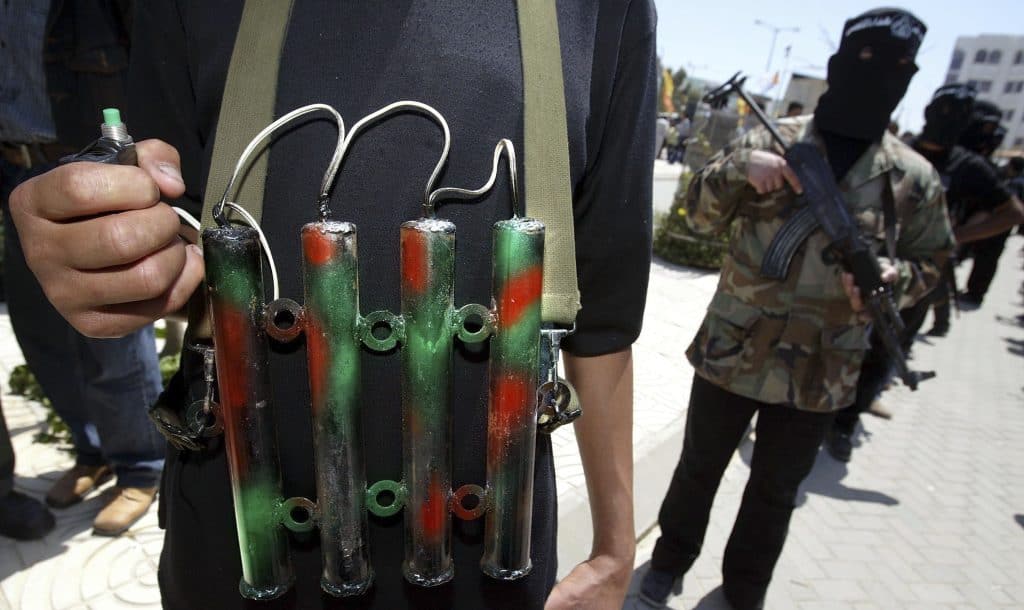
Israel Defense Forces (IDF) spokesperson Daniel Hagari said on Dec. 15 that Palestinian terrorist organizations have sent suicide bombers against ground troops operating in the Gaza Strip.
FDD’s Long War Journal has tracked statements published by Palestinian terrorist organizations since the Hamas-led Oct. 7 terrorist attack. Three groups have issued statements claiming responsibility for launching “martyrdom” operations against IDF personnel.
Hamas released a statement and accompanying video footage on Nov. 9, alleging that three “martyrdom fighters” engaged in an attack against IDF ground troops at Rantisi Hospital, located in the Nasser neighborhood of Gaza City. However, the video evidence provided by Hamas does not indicate fighters detonating charges against Israeli forces.
On Dec. 8, the Popular Resistance Committees issued a statement declaring their involvement in a “martyrdom operation” targeting Israeli forces. According to their account, the group’s members successfully detonated a bomb against a group of Israeli soldiers, resulting in the death of one of the attackers. The group did not provide evidence to support its claim.
In a statement published by Islamic Jihad on Dec. 10, one of its “martyrdom fighters” emerged from an underground tunnel within a building. The fighter engaged in a confrontation with Israeli forces present in the structure before blowing himself up. Like the Popular Resistance Committees, Islamic Jihad did not produce evidence to assert its claim.
During the Second Intifada, Palestinian terrorist organizations such as Hamas, Islamic Jihad, al-Aqsa Martyrs Brigades, and the Popular Resistance Committees frequently employed suicide bombers as a favored means to target Israelis. Targets of attacks included military personnel, restaurants, café, hotels, and malls, to name a few. Nevertheless, through intensive efforts to counteract these organizations’ support systems and networks facilitating the dispatch of suicide bombers, Israel mostly eradicated this form of terrorism inside its territory.
There are occasions where attackers have slipped through Israel’s security net and successfully carried out attacks.
For example, on Oct. 11, 2015, a Palestinian identified as Israa Jaabis detonated a gas cylinder in her vehicle when Israeli police stopped her outside of Jerusalem. The officer survived the attack, including Jaabis. Israel released Jaabis in a hostages-for-terrorists swap with Hamas on Nov. 26.
Approximately six months later, on Apr. 21, 2016, a Palestinian identified by Israeli police as Abdul Hamid Abu Srour detonated a bomb on a Jerusalem bus, injuring twenty people. Srour, a member of Hamas, died from wounds he suffered in the bombing.
Terrorist groups have yet to publish undisputable evidence of suicide bombings against IDF troops operating in the Gaza Strip. Still, as the Israeli military continues to dismantle Hamas and other Palestinian terrorist organizations, it’s possible more bombers will be sent against ground troops.







